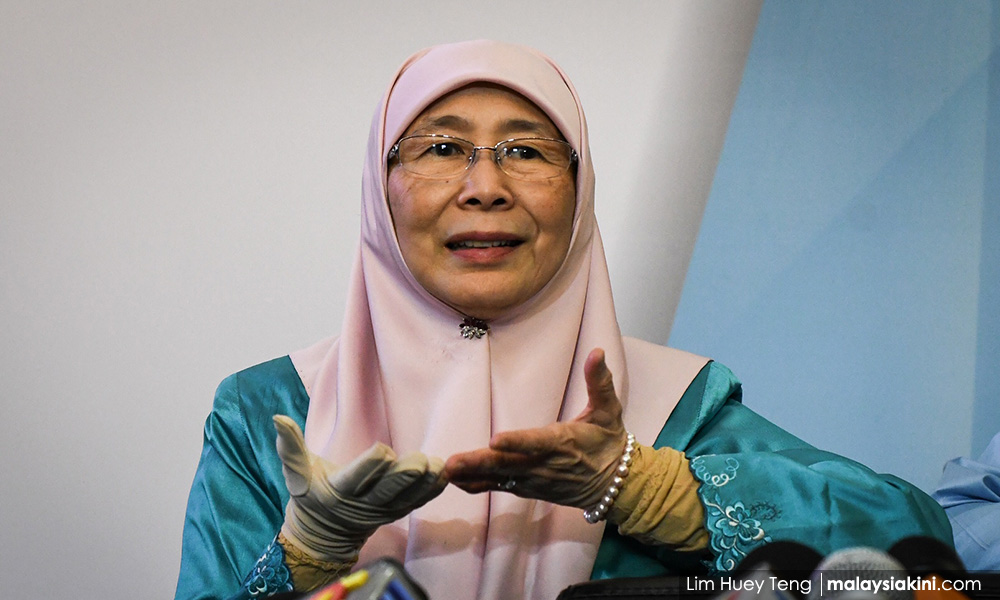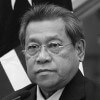What happens when teachers do not teach for months in poor and/or rural communities? For those that have never experienced months-long teacherless classrooms under the Ministry of Education, we offer a thorough guide.
Extreme teacher absenteeism has become a decades-long disaster ⤤ of government policy, namely in anti-corruption and education.
What is extreme teacher absenteeism?
Extreme teacher absenteeism is measured in weeks and months, not hours or days.
Malaysia practices an exam-focused, time-constrained primary & secondary education curriculum.
Extreme teacher absenteeism is a classroom with students, but without a teacher—for months.
A violation of Constitutional proportions.
Extreme teacher absenteeism is unchecked ⤤, appalling misconduct by corrupt senior public servants that target poor, rural, and/or otherwise powerless families' children.
It is exactly what it sounds like: for months at a time, students enter classrooms with zero teachers: no subject teacher and no replacement teacher. Their education is demolished because our government did not believe in its promises—and we did.
Extreme teacher absenteeism is an open secret.
Yes, the MOE has repeatedly been forced to publicly acknowledge its existence.
The ⤤ Malaysian ⤤ Ministry ⤤ of ⤤ Education ⤤ genuinely ⤤ categorically ⤤ knows ⤤, students know, parents know, and schools know ⤤.
Why haven't all these corrupt officers been disciplined or dismissed? Often, the corrupt protect the corrupt with the rationalizations, "So what if a family's future is demolished? They're poor anyways!" or "Well, I'm only stealing a little bit. Others are stealing more than me!"
Why no mass media exposes? Because most victims are poor, in rural areas, and/or disenfranchised, thus their exploitation is the status quo even in media circles.
The result is that corrupt ⤤ Education ⤤ Ministry ⤤ officers ⤤ quickly realized they can abuse their Federal Government association to cover up human rights violations and call it "culture" ⤤—the "culture" of abuse, the "culture" of corruption", the "culture" of oppression. But, whose culture is it: ours or theirs?
Public service corruption & misconduct are intricately connected.
To protect any public servant from civil, criminal, or legal penalties is a form of criminal gratification—the basis of corruption under the MACC Act. Learn more here.
Wait. Don't we have laws to stop crimes like corruption and abuse of power? I mean, these are our children! Let us recall the horrific SK Pos Tohoi scandal ⤤.

Five students dead. Two more near death. Significant allegations of abuse, extrajudicial beatings, and harassment by MOE officers.
"Will you send your own children to this school?" asked the reporter, to which the education ministry representative responded to by laughing.
Parents were not informed. Did MACC prosecute any Federal Government officers involved the alleged cover-up? Did the police?
Did the Education Service Commission discipline all negligent officers? Did t he Education Minister publish the investigation report?
If not, surely we had checks and balances, right? Where was the EAIC? Where were MACC's oversight panels? Where was a Parliamentary Inquiry? Where was a Royal Commission of Inquiry?
If not, what signal did the Federal Government send to corrupt Education Ministry officers? The consequences of each failed check-and-balance in the education system is a life irreparably harmed.
What happened? Three years later, the SK Pos Tohoi survivors were forced to summon the Ministry of Education.

This same pattern—legal loopholes, zero transparency & silence, allegations of investigation interference & abuse of power—is what allows most misconduct including extreme teacher absenteeism to continue in Malaysia's education system.
Extreme teacher absenteeism is sustained by corrupt MOE officers that protect other negligent, abusive, or corrupt MOE officers.
How common is extreme teacher absenteeism?
These numbers are underreported and likely tied to allegations of Federal Education Ministry officers weaponizing their Federal Government's association to instead intimidate, extort, and/or silence child victims to shut down corruption and misconduct investigations. Examples these alleged cover-ups can be found below.
From school principals
The Organization for Economic Co-Operation and Development (OECD) organizes the Teaching and Learning International Survey (TALIS), an evidence-based survey and report.
Malaysia's last valid TALIS survey result, from 2009, shows that 19.5% of Malaysian principals reported teacher absenteeism ⤤ was hindering instruction "a lot" or "to some extent" at their school.
Percent of Malaysia's Schools Affected by Teacher Absenteeism & If It Hindered Instruction, according to School Principals (2009)
Extrapolate to today's 10,000 schools ⤤ under the Ministry of Education and afflicted schools could reach ~2,000 primary & secondary schools.
From politicians
Three current Ministers have publicly admitted the scourge of extreme teacher absenteeism over the past 20 years.
- In 2000 ⤤, Parti Bersatu Sabah's Deputy President Maximus Ongkili admitted it—in 2022, he is the Minister in charge of Sabah and Sarawak Affairs.
- In 2008 ⤤, Deputy Minister of Education Dr. Wee Ka Siong admitted it—in 2022, he is the Minister of Transport.
- In 2010 ⤤, Minister of Education and Deputy Prime Minister Muhyiddin Yassin admitted it—in 2021, he was Prime Minister.
Two decades of extreme teacher absenteeism later, it is clear that simply yelling "diseases are bad" does not make one a doctor.
From the Ministry of Education
Besides the two former Education Ministry leaders above (2008 and 2010), the Education Ministry has repeatedly admitted it has a serious extreme teacher absenteeism problem.
- In 2011 ⤤, the Sabah State Education Department stated the teacher absenteeism problem in Sabah was "serious"; the Ministry's data showed in February 2010, nearly 117 teachers in 11 schools were not on duty. In May 2010, it increased to 157 teachers in 14 schools. The Sabah State Education Department likewise claimed new programs were required to enforce "attitudes with integrity".
- In 2012 ⤤, the Gua Masang District Education Department admitted it knew about absent teachers in orang asli schools in Kelantan who sometimes came just three times a week.
- In 2013 ⤤, the Ministry of Education authored the report Melindungi Masa Instruksional: Kembali Kepada Yang Asas | Guru Mengajar dan Murid Belajar: the 271-page report mentions teachers refusing to teach over 20 times.
- In 2014 ⤤, the Kelantan State Education Department admitted they were aware of misconduct involving teacher absenteeism.
- In 2017 ⤤, the Education Ministry admitted 55.4% (the majority) of all their disciplinary punishments over the past 7 years were against "tidak hadir bertugas." Thus 1,912 cases / 270 disciplinary actions per year, while we estimated above ~2,000 schools could be affected. Notably, MOE warnings are also a type of disciplinary "punishment".
Causes of Employee Disciplinary Action in Malaysia's Ministry of Education (2010 to 2017)
From teachers and researchers
Teachers likewise have often been silenced and only rarely has extreme teacher absenteeism been thoroughly discussed, much less studied.
- In 1998 ⤤, Tan Siew Lan wrote teacher absenteeism was a large enough organizational commitment problem to require further research.
- In 2004 ⤤, Hawati binti Nawawi at UNIMAS wrote a 113-page report on the factors of teacher absenteeism in rural Sarawakian schools.
- In 2005 ⤤, Chua Lee Chuan at Institut Pendidikan Guru Kampus Batu Lintang declared absent teachers exhibited escape-avoidance behavior and stated this failure would "not be beneficial in any profession."
- In 2011 ⤤, Stephanie Lau Shan Shan, a teacher-in-training at Institut Pendidikan Guru Kampus Tuanku Bainun, concluded teachers & the government must take responsibility as this "hot issue" practiced by Federal Education Ministry officers victimized students and was "always noticed" by surrounding communities.
- In 2012 ⤤, Intan Fairuzzah binti Abdullah at UPSI calculated the yearly cost of absent teachers was over RM268,339 per year in secondary schools and over RM311,043 per year in primary schools.
- In 2015 ⤤, Dr. Christine Augustine Kiek at UPSI reported, "it is apparent that teacher absenteeism will impact negatively on student academic achievement".
- In 2015 ⤤, Nina Adlan Disney and CEO of Asia Pacific Schools at an IDEAS Forum noted extreme teacher absenteeism had become part of a "great concern" on the quality of teachers.
From affected students and families
Mere hours after the High Court summons, Facebook groups collected thousands of messages from students and Malaysians of all walks of like: some were compiled by Malaysiakini ⤤. Many of former students voiced out similar experiences: months and months without a teacher while they state Education Ministry officers quietly covered up cases and/or refused to take action.
Consider the median income of these families (you need not imagine ⤤): the power disparity explains why dehumanizing, corrupt conduct of extreme teacher absenteeism were not halted within five days, as it must by law ⤤. If a corrupt individual sent a bullet to the MACC Chief Commissioner ⤤, we would expect they would be jailed. Were they? No. If the MACC Chief Commissioner was forced to flee the country ⤤, what happens when the same corrupt forces target the poor, rural, and/or disenfranchised victims of corrupt MOE officers? Can our children flee or do we not enjoy the same privileges as top public servants?
Kota Belud, Sabah, is one of Malaysia's poorest areas, ranked 134 out of 158 administrative districts.
How is extreme teacher absenteeism able to continue?
How is it possible so many students claim teachers are absent for months with no action from the Ministry? Don't we have records, procedures, and laws to stop this?
When Education Ministry officers engage in misconduct, the disciplinary procedures are clear, like any misconduct at an office or restaurant. In schools where a teacher is absent without cause, the head of the department must make a report within five days; they investigate, gather witnesses, and collect documentary evidence. Their case against the negligent officer is then taken to the Disciplinary Board under the Education Services Commission. Yes: this is the actual procedure and timeline.

Do we notice the problem? The school investigates itself. The Ministry investigates itself.
If you can abuse your power, you have too much of it.
Our records, procedures, and laws are toothless—a decades-long obvious conclusion to the B40 community—because these cannot defend against a critical type of abuse of power:
A CORRUPTIBLE INVESTIGATION PROCESS WHERE THE CORRUPT INVESTIGATE THE CORRUPT.
If the misconduct investigations are compromised, the "proper channel" is dead. This failure is not hypothetical: this failure has allegedly already halted multiple MOE investigations, according to whistleblowers:

I am a retired Education Ministry officer, whereby I started my career as a young teacher with idealistic views...that was before joining the Ministry.
With the amount of corruption, deception, abuse of power, and black magic that I witnessed in the ministry, one would have thought that the principal business there would have probably been drugs or guns, rather than children and teachers. Eventually, the Ministry's internal culture and graft tarnished my ideals on education in Malaysia.
Willful Blindness: the modus operandi of the corrupt
The procedures are clear. The laws are clear. The Courts are clears. Under no circumstance is a months-long classroom legal.
That is what is supposed to happen. But it didn't. Here's why, in so many cases:
Sometimes in long-term corruption cases, higher-ranking MOE officers create a cover-up to ensure their subordinate officers are not disciplined. Why, some ask, wouldn't the higher-ranking MOE officers report the absenteeism? Is that not their duty? Wouldn't they be applauded for stopping misconduct?
The answer lies in "long-term" misconduct: because any reports that suddenly expose a shocking long-term scandal will also expose the higher-ranking officers' own failures to prevent their subordinates' misconduct. Thus, these officers collectively agree to willful blindness: don't report anything so that they can always maintain plausible deniability that "we simply never knew". If only they had known, these officers brazenly lie to the public in press conferences, "surely" they would have taken action.
Of course, the Courts or the people will ask, "How could the superior officer not know? That corruption went on for so long. If the superior officers had done their duties, they would've prevented this corruption years ago. Their report actually explains the shocking negligence that is already a major disciplinary offence."
If a single long-term misconduct case at the MOE is thoroughly exposed...
- ... it will likely implicate dozens of high-ranking public servants (e.g., RM10k+ monthly salaries) that had all refused their duties or were wholesale negligent. Remember: refusing to report corruption is also a crime ⤤.
- ...it will likely lead to prosecution of school principals, PPD directors, JPN officers, and KPM upper management: it is their deepest, worst nightmare.
- ...it will destroy the government's narrative that they have always "care" for the rakyat.
- ...it will awaken the nation gaslit for decades: "This country is great: it is you that is weak! We are honest and fair: it is you that is a liar! This government is the most caring to its children: it is you that is dangerous!"
Of course, the Ministry, like any organization, seeks to minimize legal liability. But, for corrupt MOE officers, they twist that mentality to both commit misconduct and then cover it up. In their warped mindsets, they promise their colleagues that they are "saving" the Ministry from abuse & negligence scandals—while, in fact, they are becoming criminals, joining a conspiracy to commit corruption, obliterating the Ministry's reputation, destroying the lives of innocent children, disrupting the fabric of society, and are ironically significantly increasing the Federal Government's legal liability.
As these corrupt officers have already engaged in egregious long-term misconduct, it becomes so easy to add more misconduct to the list: cover it up and halt the investigation, through coercion or otherwise, and they have "solved" all their problems. No scandal, no media report, no criminal prosecution: keep the thousands of stolen ringgit coming to their bank accounts each month and keep their "clean" reputation.
Some of these current caretakers of Malaysia's education (the school administrators, principals, and the district / state education / Ministry officers) have significantly damaged the reputation ⤤ of the Ministry of the Education to protect their disturbing personal power & steady wealth growth.
Extreme teacher absenteeism continues because corrupt MOE officers want the rakyat—not they themselves—to bear the cost of thousands of destroyed children's lives.
Thus, corrupt officers simply refuse to document the ongoing corruption at their school to attempt to avoid all liability.
The price for the corrupt? Simply sustain a nationwide culture of impunity, silence, and horror against child victims to ensure their total legal immunity.
The Problem: the Ministry investigating itself
Thus, the only fair investigations can be those without the involvement of the Ministry of Education that has a long-vested interest in appearing clean to the public's eye.
The Education Ministry's corruptible investigation process ⤤ can create the ultimate legal shield for corrupt Education Ministry officers. These corrupt public servants can act with harsh dehumanization & fear tactics to ensure exposure is limited by targeting poor, rural, or otherwise powerless families and their children that are unable to summon the Federal Government or are too afraid to go to the police or MACC (if and when those two enforcement agencies are willing to act).
Their alleged organized mafia-like strategy of the corrupt is that if the student can be convinced that he or she does not deserve humanity ("Make sure teachers refuse to acknowledge any blatant misconduct!"), then the student will forgo their legal rights, including the place where rights are actually guaranteed: in Court. This fear tactic has been carefully planned by corrupt officers to work 100% of the time. Until that day it won't.
All laws against misconduct actually depend on an incorruptible investigation process. It is the beginning and the end. Nothing functions without a fiercely independent investigative process as the underlying backbone: detection fails, investigations fail, and deterrence fails. This conclusion is obvious, but it is rarely even discussed in "education reform" circles and hardly ever litigated. It means justice is always out of reach for many poor, rural, and/or powerless families.
Corrupted investigations lead to zero consequences, which embolden the most corrupt public servants to steal more, hurt more, and abuse more, while also frightening and delegitimizing would-be whistleblowers.
Getting away with it is part of their charm.

Have Federal Education Ministry officers ever allegedly weaponized their Federal Government association to intimidate, extort, and/or silence child victims to shut down internal, police, and/or MACC investigations?
YES.

As recent as several months ago, we encountered a case where secondary school students were asked to spend time alone with a male representative of a state education department (JPN) and his assistant. During this time, intimate, physical contact took place.
As concerned educators, we did our best to gather evidence and testimonies from the victims and submitted these to the Ministry of Education (MoE). The tactless internal investigation resulted in the perpetrator getting hold of the investigation report, exposing the victims and the informer, and MoE setting up a discussion session with the victims and perpetrators in the same room!
The perpetrator got away with a slap on the wrist because the underage victims were intimidated by the thought of challenging a figure of authority, and didn’t want their schools and communities to view them as homosexual.


The victim also claimed she was raped at a hotel in Port Dickson the next day (Mar 28) and the day after. “At about 9am, on Mar 29, the suspect sent the victim to the Paroi volleyball hall in Seremban to take part in a competition and after that, the suspect is believed to have picked up the teen before returning to the hotel, where he raped the victim again,” the police chief said in a statement.
The man then sent the victim home the next day. He warned her not to reveal the incident as he had a pornographic video of her which he threatened to make public, the statement added.

Page 11:
A police report was launched following the incident and eight statements from the relevant parties were recorded including the three teachers.
However, there were attempts by the headmaster of the school to withdraw the police report and let the school handle the matter internally. To date, the teachers who were behind the abusive actions were still teaching in the school.

The 18-year-old girl who is suing her English teacher said she and her classmates were instructed to sign a testimonial paper taking the blame for their teacher’s absence from class for a period of seven months.
In an email reply to The Malaysian Insight’s questions on her case, Siti Nafirah Siman said Suid Hanapi, the principal of SMK Taun Gusi, Kota Belud, was the one who told the students to sign the document.
What are effects of unchecked extreme teacher absenteeism and its related corruption?
The conclusions are clear: corruption against children and corruption in education have cancerous, decades-long consequences that can tear millions of children's potential to shreds while enriching a ultra-tiny minority of the powerful, the wealthy, the protected, and the corrupt.
It is a purpose-built recipe to create economic stagnation
With data from UPSI, DOSM, and the Khazanah Research Institute ⤤,
- we know RM268,339 is burned per year from a secondary school teacher's absence
- we know Malaysia has been a "Middle Income Nation" for over 55 years
- we know the lifetime income gap between an SPM certificate and a university degree is RM2,985,120.
- we know Malaysia loses tens of billions of ringgit in GDP value from corruption every year ⤤. In lives lost? The numbers are genuinely uncountable.

Poor, rural, and/or powerless Malaysians know it best: corruption is a harsh, daily, and thoroughly lived experience.
It exacerbates devastating inequality: inequality creates disunity
Malaysia's poor are often chastised to "be more patient" or "it's because you did not work hard enough", while their children are told all the MOE always "knows what is best".
Yet when they go to school, they realized it is the teachers that were negligent and the students that were patient. In Sabah, the gap between those with power (e.g., senior public servants, politicians, wealthy individuals) and Sabah's children has long been a chasm. It is not even close. The difference is black and white ⤤:

- In Sabah, 98% of teacher homes have access to internet, while only 52% of student homes ⤤ have the internet access: appalling inequality.
- In Kota Belud, the home of these Court cases, the poorest 50% of Kota Beludians only earn 22% of the combined Kota Belud income ⤤
Kota Belud has one of the highest inequality rates:
- In Kota Belud, 3 out of 10 homes do not have piped water ⤤, nearly 7 times higher than Malaysia's average (1 out of 25 homes).
Kota Belud has a very high number of households without piped water:
- Kota Belud is one of Malaysia's poorest states, ranked 134 of 158 districts—even though it is the home of a former Ministry of Education's Director-General, a former Sabah State Education Director, the former Kota Kinabalu District Education Department Director, two Chief Ministers of Sabah, four Federal Ministers, and a Speaker of the Dewan Rakyat in Parliament.
Kota Belud is one of the poorest districts in the country
The Government Graduates of Kota Belud, Sabah and SMK Taun Gusi







- 28% of Malaysia's children ⤤ live in Malaysia's three poorest states: Kelantan, Sabah, and Sarawak. 28 percent.
Roughly 1 in 3 Malaysian children (28%) live in the three poorest states (2020)
- Income inequality is a symptom of the stunning education inequality gap ⤤, as confirmed by the Khazanah Research Institute: "Better quality schools require high household income."
It stunts or often demolishes the lifelong potential of its survivors
- As students lose teachers, their exam pass rate lowers. Lower qualifications mean lower median income (page 30) ⤤: a Diploma earns 1.4x more than an SPM certificate, while a Degree earns 2.3x more than an SPM certificate.
- Even weeks of missed classes can have terrible impacts on a child's education: already, Malaysian children receive 9 years of quality education despite going to school for 12 years (page 5) ⤤.
- Often, ETA includes long-term neglect ⤤ as students are abandoned: neglected children have 1.4x higher odds for early death and poorer neglected children have 1.9x higher odds for early death.
- Childhood maltreatment is associated with lower-quality relationships later in life, pushed by depression, dependence, and insecure attachment ⤤.
It teaches injustice as a "fact" of life
- It teaches hypocrisy: a government by and for powerful elites, not the people.
- School is our first interaction with the government: what we learn in school is what we learn for life.
- It teaches that laws are most often used as weapons of control against the weak by the powerful versus to apply equally to all.
- It gaslights villages: "Of course, the accused's friend can investigate and judge the accused lah. Itu normal. Ini budaya kita lah."
- Power means never being told to leave. Power means immunity against written laws.
- Sometimes, public servants do not serve the public, but enriching themselves with as much stolen wealth as possible.
- Government corruption is so normal that all the witnesses should be prepared for pressure to stay quiet and "keep" the status quo.
- Schools teach a culture of silence: why speak up about any wrongdoings if the corrupt will investigate the corrupt?
- When vandalism occurs, teachers demand student whistleblowers. When extreme teacher absenteeism occurs, teachers should do the same.
What is the solution?
In short,
- Independent investigations, outside of the Executive Branch (e.g., an Ombudsman)
- Unassailable witness protection, including whistleblowers and survivors
- A transparent, and strict, process
Who is afraid of that?
As of today, our corruptible investigation process is sustained by elite-first politicians, greed-first senior public servants, and fearful and / or corrupt enforcement agencies who each 1) refuse to admit independent investigations are required (like in a Court of Law → why many elites try to bury litigation), 2) themselves insecure about their corruption and tattered reputations, so they neutralize any serious scrutiny that will expose their significant failures, and 3) enjoy a lavish lifestyle with limited to zero empathy of a B40 Malaysian's life experiences.
Change can only come with jurisdiction over the Ministry of Education: the Courts, Cabinet Ministers, Members of Parliament, and MACC / Police. All other parties hold extremely limited power alone; still, other institutions can be used to create pressure against these parties.
The Tiada.Guru Campaign has prepared a list of solutions, recently accepted into the CSO Platform for Reform's Rakyat Manifesto.


 BM
BM
 EN
EN















